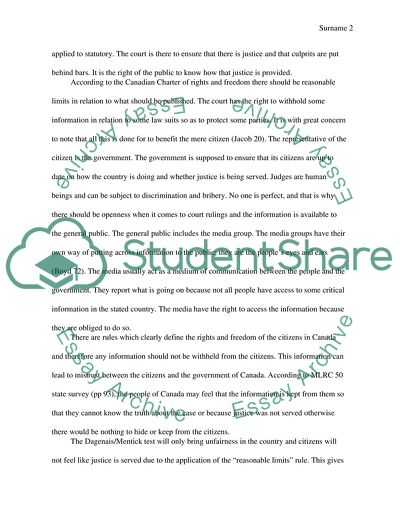Cite this document
(Publication Bans Case Study Example | Topics and Well Written Essays - 1750 words, n.d.)
Publication Bans Case Study Example | Topics and Well Written Essays - 1750 words. https://studentshare.org/law/1793473-do-you-feel-that-the-dagenaismentuck-rules-meet-the-standard-of-being-reasonable-limitsas-can-be-demonstrably-justified-in-a-fee-and-democratic-society-art-1-canadian-charter-of-rights-and-freedoms-should-those-rules-apply-to-statutory
Publication Bans Case Study Example | Topics and Well Written Essays - 1750 words. https://studentshare.org/law/1793473-do-you-feel-that-the-dagenaismentuck-rules-meet-the-standard-of-being-reasonable-limitsas-can-be-demonstrably-justified-in-a-fee-and-democratic-society-art-1-canadian-charter-of-rights-and-freedoms-should-those-rules-apply-to-statutory
(Publication Bans Case Study Example | Topics and Well Written Essays - 1750 Words)
Publication Bans Case Study Example | Topics and Well Written Essays - 1750 Words. https://studentshare.org/law/1793473-do-you-feel-that-the-dagenaismentuck-rules-meet-the-standard-of-being-reasonable-limitsas-can-be-demonstrably-justified-in-a-fee-and-democratic-society-art-1-canadian-charter-of-rights-and-freedoms-should-those-rules-apply-to-statutory.
Publication Bans Case Study Example | Topics and Well Written Essays - 1750 Words. https://studentshare.org/law/1793473-do-you-feel-that-the-dagenaismentuck-rules-meet-the-standard-of-being-reasonable-limitsas-can-be-demonstrably-justified-in-a-fee-and-democratic-society-art-1-canadian-charter-of-rights-and-freedoms-should-those-rules-apply-to-statutory.
“Publication Bans Case Study Example | Topics and Well Written Essays - 1750 Words”. https://studentshare.org/law/1793473-do-you-feel-that-the-dagenaismentuck-rules-meet-the-standard-of-being-reasonable-limitsas-can-be-demonstrably-justified-in-a-fee-and-democratic-society-art-1-canadian-charter-of-rights-and-freedoms-should-those-rules-apply-to-statutory.


